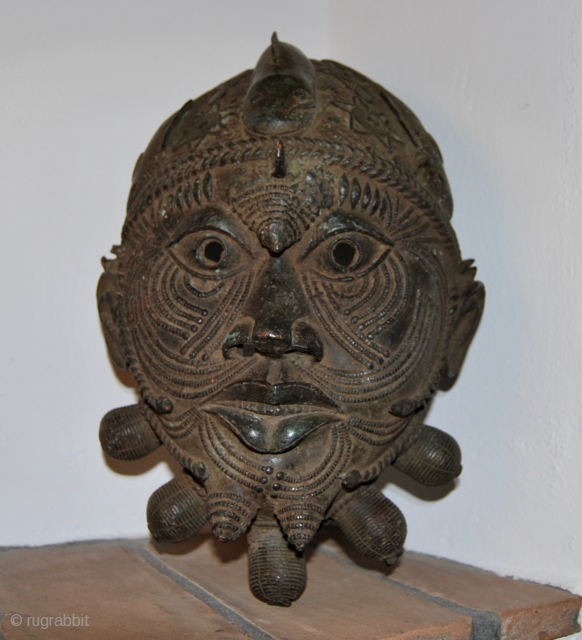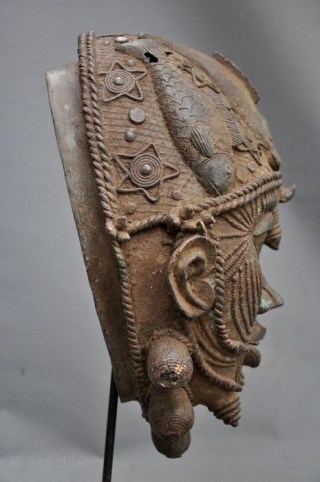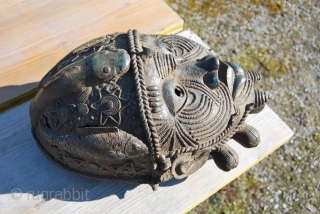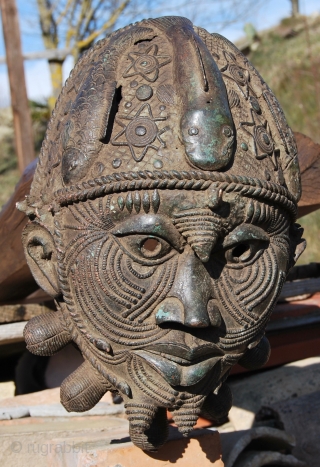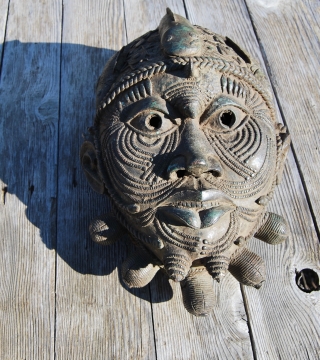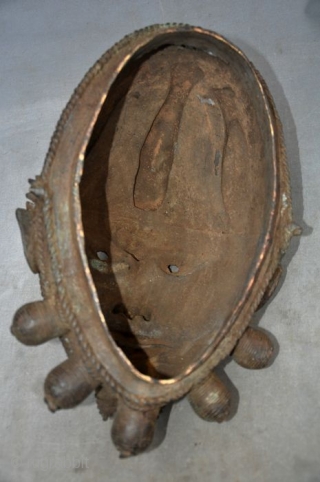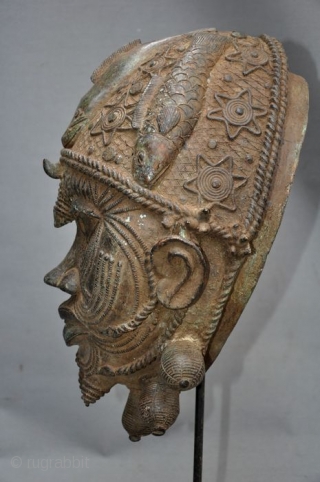Back
Benin royal bronze head of Oba Edo king. Cm 40x25 ca. Weight is almost 6 kgs. Mid 20th century. Lost-wax casting technique. Unusually big mask of the head of an Oba, the king, made to glorify him as a divinity. Mid 20th century there have been discovered several bronze heads who were not much different from those found in Ife, the holy city of the Yoruba and dating to the 14th and 15th century. —————— Now, only if you are really interested, you can go and read this infos taken from the web and some publications: The famous royal center of Benin in Nigeria produced a number of remarkable objects and bronze heads cast in bronze including the original of this late replica that was also cast in Nigeria. Benin City was the center of power for the Edo people and the place of residence for the Oba, the ruler. This is a head of an Oba based upon a 14th-15th century original and is a stylized portrait of a man at the Court of Benin. What is important is to note that the skill of the Nigerian bronze and brass casters of today who cast this head continue a tradition nearly 500 years old at Benin and have not lost their skill in producing interesting works of art.
Benin heads were kept on altars. Benin art is royal art, made to glorify the great king, or oba, who is considered to have divine ancestry. The brasscasters guild historically worked primarily for the monarchy, with smaller pieces being available to chiefs. It has been in existence since the fifteenth or sixteenth century. Most castings are brass (an alloy of copper and zinc with traces of other minerals.) although some are made made of bronze (an alloy of copper and tin with traces of other metals.) Without doing an analysis on each piece, it is not possible to know the content. Benin castings were all made by the lost-wax technique, which produces one-of-a-kind pieces. a core of clay is covered with wax, which is then carved into the exact shape which the artist wants the finished piece to have. Additional wax ""pipelines"" are made for the wax to exit and gases to escape. The wax is then covered with a layer of fine clay, with succeeding layers, each coarser than the previous one. The mold is then heated, which melts the wax and fires the clay into a solid mold. The empty space is filled by pouring in molten brass. After the piece cools, the clay mold is broken, revealing the metal piece ready for polishing.
price:
please inquire
- Home
- Antique Rugs by Region
- Category
- Profiles
- Post Items Free
- Albums
- Benaki Museum of Islamic Art
- Budapest: Ottoman Carpets
- Gulbenkian Museum
- Islamic Carpets. Brooklyn
- Islamic Textiles. Brooklyn
- Konya Museum: Rugs
- MKG, Hamburg
- MMA: Caucasian Carpets
- MMA: Mamluk Carpets
- MMA: Mughal Indian Carpets
- MMA: Ottoman Carpets
- MMA: Safavid Persian Carpets
- MMA: Turkmen Rugs
- McCoy Jones Kilims
- Ottoman textiles. Met
- Philadelphia Museum
- Rugs and Carpets: Berlin
- Seljuqs at the Met
- TIEM, Istanbul: Carpets
- V&A: Classical Carpets
- Vakiflar Carpets: Istanbul
- Baluch Rugs: Indianapolis
- Gallery Exhibitions
- Jaf an Exhibition
- Alberto Levi Gallery
- Andean Textile
- Christie's London: 2016
- Francesca Galloway
- HALI at 40
- ICOC Washington, DC 2018
- Jajims of the Shahsavan
- London Islamic Week April, 2018
- Mongolian Felts
- Navajo Rugs: JB Moore
- Persian Piled Weavings
- SF Tribal & Textile Art Show 2020
- SF Tribal 2019
- Sotheby's: C. Alexander
- Turkish Prayer Rugs
- Turkmen Main Carpets ICOC 2007









